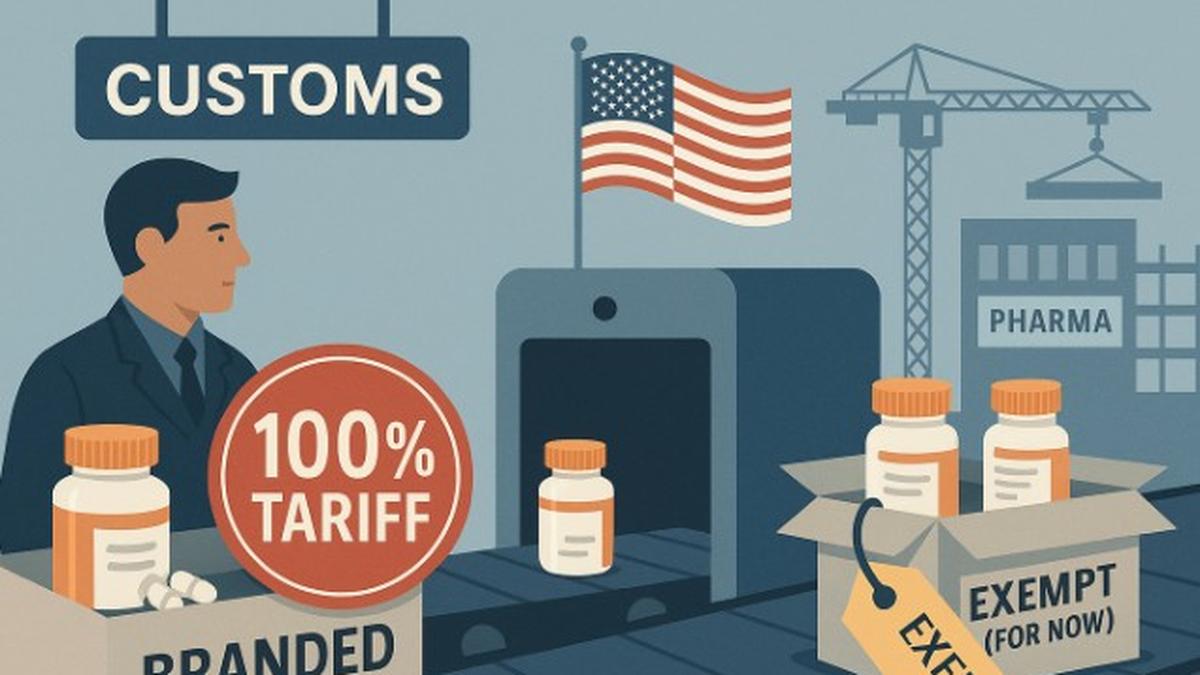Unbelievable 100% Tariff on Pharma Imports: What It Means for Your Meds!

Imagine waking up one day to find the medications you depend on have doubled in price overnight. On September 25, 2025, President Donald Trump unleashed a bombshell announcement: a staggering 100% tariff on all branded and patented pharmaceutical imports, set to take effect on October 1, 2025. The catch? Companies must build their manufacturing facilities in the U.S. to avoid this drastic fee. This move could send shockwaves through the pharmaceutical industry and impact millions of Americans who rely on affordable medications.
In his announcement, made via social media, Trump stated, "Starting October 1, 2025, we will be imposing a 100% Tariff on any branded or patented Pharmaceutical Product, unless a Company IS BUILDING their Pharmaceutical Manufacturing Plant in America." It’s a bold statement, and the implications are massive. While generic medicines, a significant Indian export, are theoretically shielded from this tariff, the reality is far murkier.
India has established itself as a major supplier of generics to the U.S., with exports valued at around $20 billion annually. Major players like Sun Pharma and Dr. Reddy’s Laboratories are among the companies that supply a crucial 40% of U.S. generics. But even with this exclusion, industry experts are raising alarms. Why? Because many Indian firms produce essential ingredients for branded drugs, and the new tariffs could disrupt these vital partnerships.
What makes this particularly concerning is the ambiguity surrounding what constitutes a “branded” drug. With generic medications often labeled by their manufacturers, the risk of misinterpretation looms large, potentially leading to delays and additional customs costs for Indian shipments.
Ultimately, this tariff is more than just a financial maneuver; it’s a clear signal that the U.S. is shifting its pharmaceutical manufacturing policy. While larger companies might have the capital to invest in American facilities, smaller firms could face insurmountable challenges. The real question is: how will this affect the overall pharmaceutical landscape in America?
Experts warn that rising costs associated with branded drugs could lead to a spike in demand for generics, which might initially benefit Indian suppliers. However, this could prompt U.S. policymakers to impose even stricter regulations, creating a precarious balance between affordable healthcare and domestic production.
As tensions rise in the pharmaceutical sector, the implications extend far beyond business. For U.S. patients, the stakes could not be higher. Generics have long provided a safety net against exorbitant drug prices, and any disruption in this supply chain could lead to skyrocketing costs or even shortages of critical medications.
This announcement was part of a sweeping wave of protectionist measures from the Trump administration, which also includes hefty tariffs on kitchen cabinets and upholstered furniture, all under the guise of national security. As Trump puts it, these tariffs are necessary to combat what he calls a “large-scale FLOODING” of imports.
In this rapidly evolving landscape, one thing is clear: the future of U.S. pharmaceutical policy is at a crossroads, and the ripple effects will be felt by patients and producers alike.























